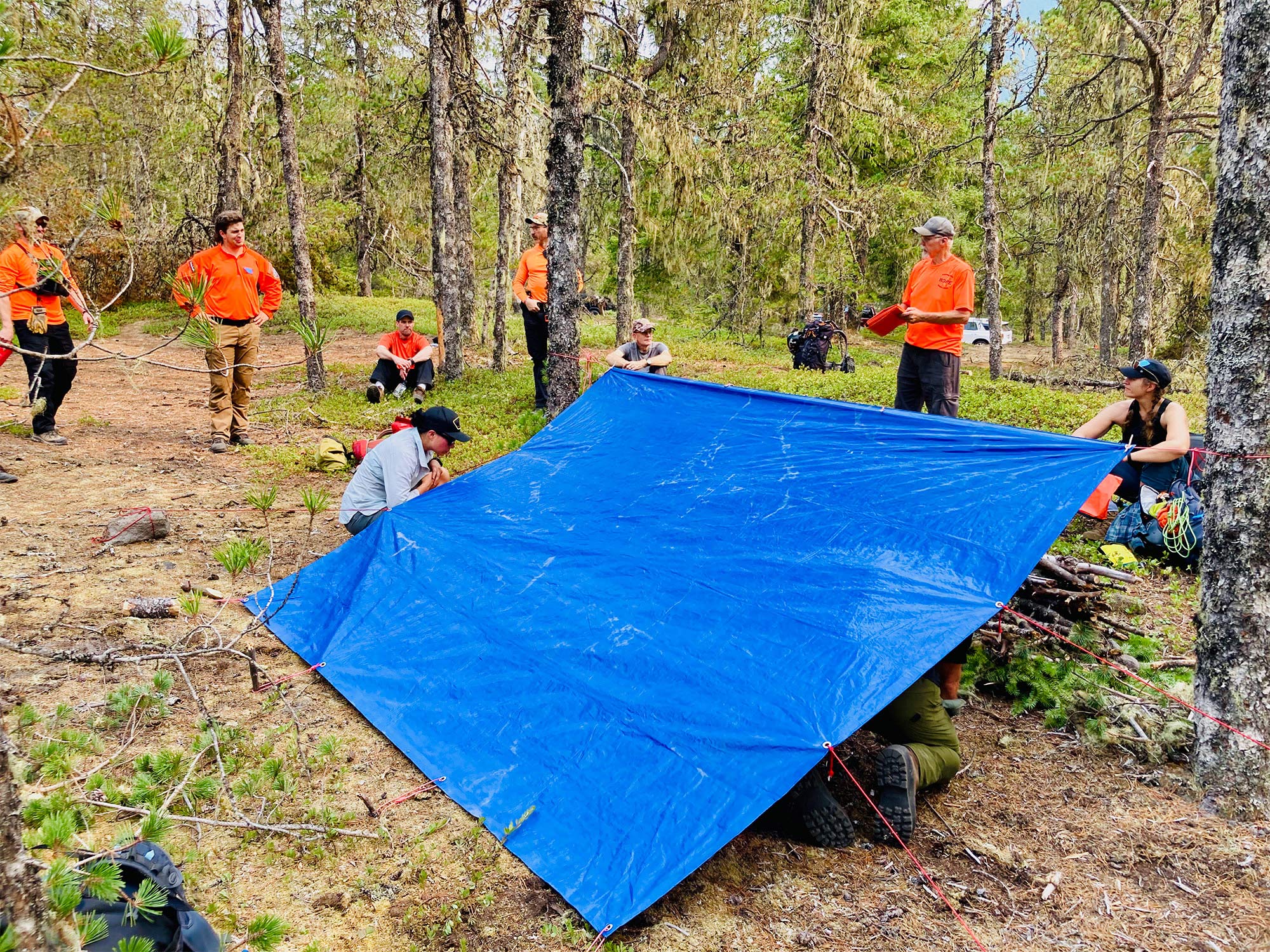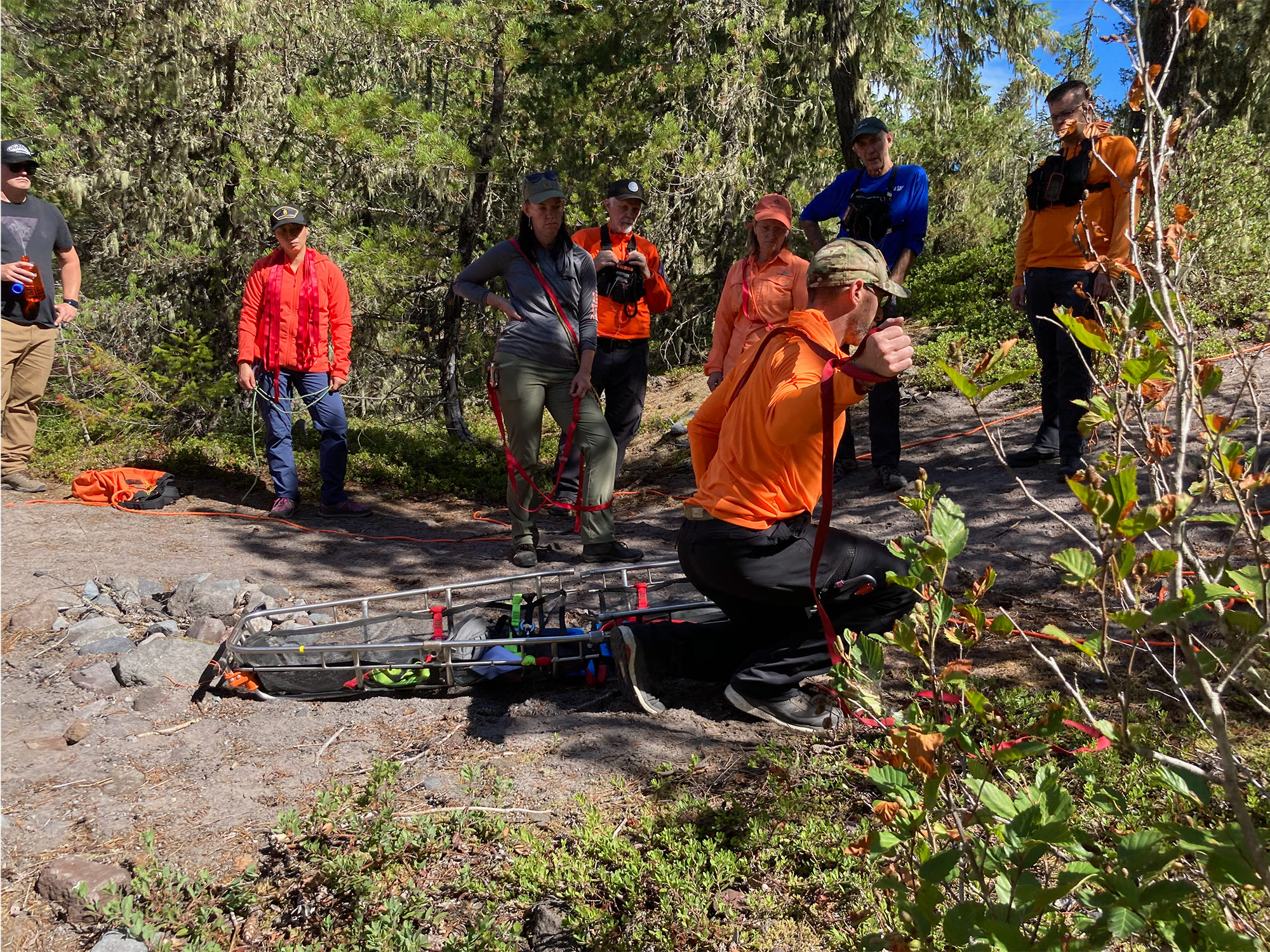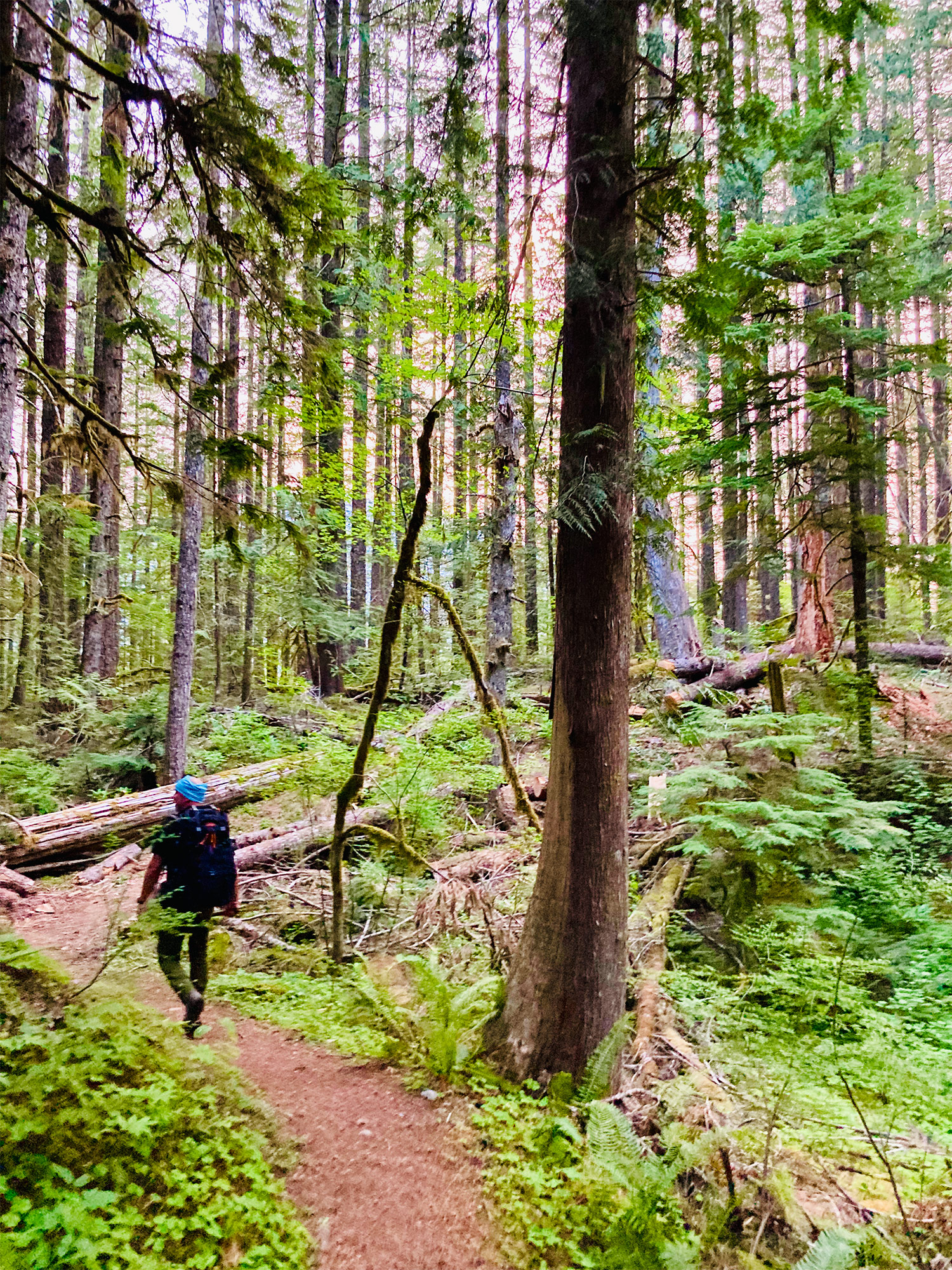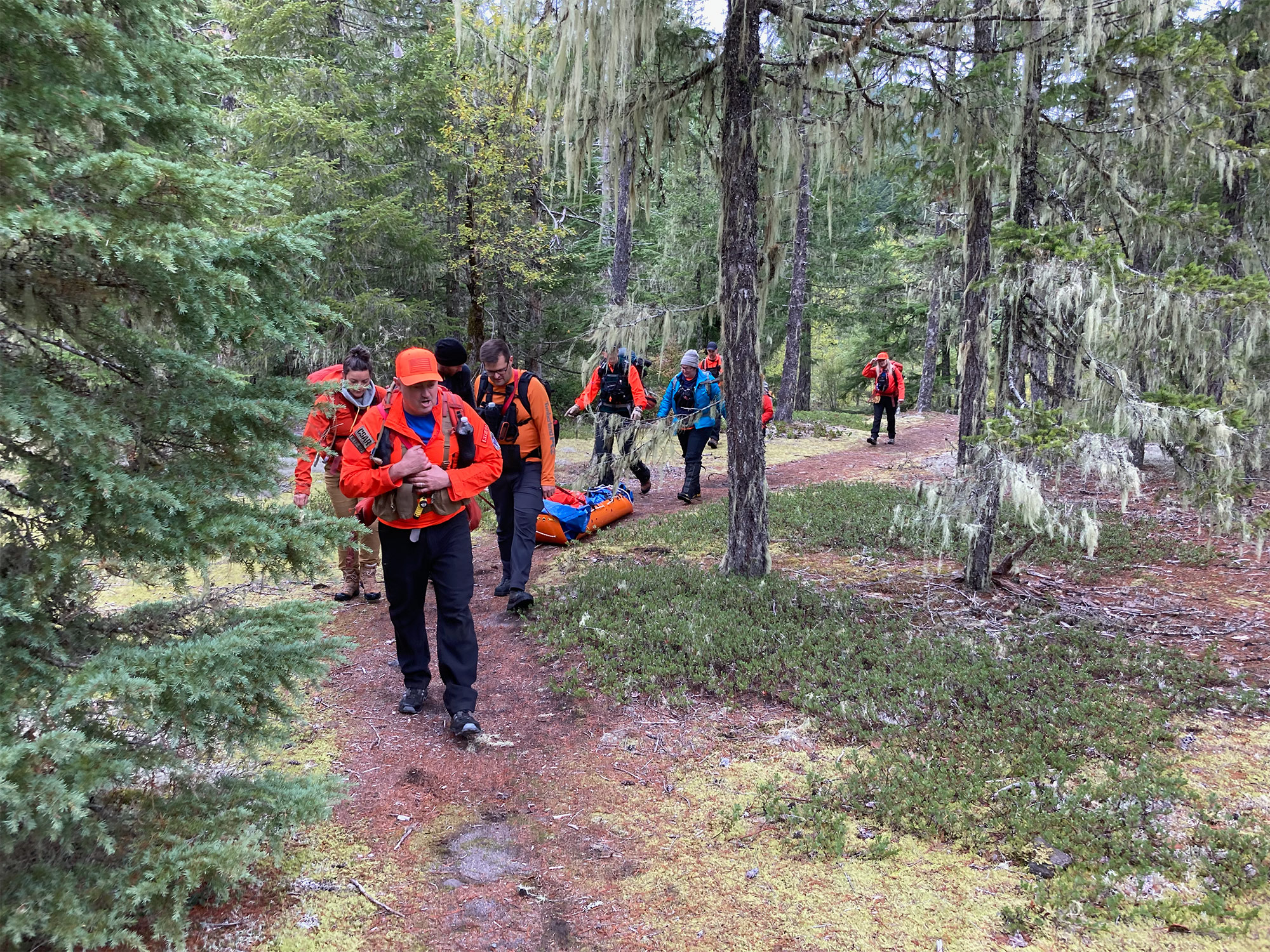Joining search and rescue part one: training
Back in June, I interviewed to join Clackamas County Search & Rescue, a volunteer team coordinated through the Sheriff’s Office. The team is relatively new, resulting as it did from a controversial consolidation of volunteer teams in 2020. As a result of this consolidation, volunteers are now required to participate in extensive background checks, drug testing, training, and certification.
Training
CPR, First Aid, and FEMA Incident Command
My training began with CPR/First Aid and FEMA Incident Command. Having previously working in the Public Information Office of Clackamas County, I had already taken several of the required FEMA classes. You’ll see these requirements under J- Additional Qualifications below.
I submitted to drug testing and passed the required background check.
Simultaneous to the background check and required training, we began fitness testing and field training in August.
Field training
I participated in four field trainings over 7 weekend days between August and October. All but one were on Mt. Hood, as several search and rescue missions happen on the mountain, furnishing a realistic venue for training (2 of the 7 days had overlapping, actual search-and-rescue missions).

Accompanied by our 113-page training manual, we received field instruction in everything from wilderness first aid to land navigation. For our final weekend in October, we were required to demonstrate the skills we learned, with no help from our trainers.
As you’ll discover below, search and rescue certification can become a full-time job…
A – SURVIVAL SKILLS & EQUIPMENT (Types 1-3) TASK
- Where land use rules and the environment allow, build a fire using materials found in the field and carried in a mission ready pack/kit. The fire must be constructed in a manner that will provide personal warmth; or team warmth; or warmth for a found subject for 8 to 12 hours.
- Identify fuel for a fire to provide heat, and location identification, for 12 to 24 hours. Fuel sources must be from the field.
- Heat and provide warm fluids to a team member and/or the found subject.
- Use any three (3) emergency signaling methods, plus one (1) emergency aircraft signaling method.
- Deploy and erect a shelter that is well marked and visible to nearby searchers, durable enough to protect from wind, rain, or snow, using materials carried in a mission ready pack/kit. The shelter must be sustainable for 12 to 18 hours for the SAR personnel, and/or subject.
- Present the equipment needed for emergency pack/kit and describe their use (CSAR specific list of equipment), the personnel will be asked to remove items and describe their use.
B – RADIO COMMUNICATIONS
- Identify the Push-to-Talk switch.
- Identify the Channel/Frequency selector.
- Change the radio’s batteries.
- Select a channel as requested by search command (frequency change).
- Operate any mobile radios commonly used in their unit if applicable.
- Act as a manual relay using a single radio.
C – LAND NAVIGATION (Types 1-4 tasks 1-9) (Types 1-3 tasks 1-15)
- Adjust the declination of a compass for their location.
- Orient a map of where they are to true north.
- Read contour lines on a topographic map and identify their relationship to physical objects on the ground.
- Determine the true north bearing between two points and the back azimuth on a map
- Plot a true north bearing on a map from a single point.
- Plot a true north bearing on a map to a single point.
- Demonstrate the ability to take a bearing on a selected object, expressing it in true north degrees.
- Demonstrate the ability to shoot a true north bearing given in degrees.
- Plot a coordinate using the primary coordinate system in your area of operation. (UTM)
- Plot their location using a map and compass either by triangulation or some other method not involving GPS or being given their coordinate.
- Demonstrate the ability to navigate in a straight line (using compass) for 500 meters with no more than four (4) degrees of deviation.
- Demonstrate the ability to navigate (by compass & pacing) between four (4) selected points in your primary search area for a minimum distance of 1 kilometer with no more than 40 meters of deviation from the final point.
- Demonstrate the ability to navigate around an obstacle blocking your selected path while staying on course.
- Demonstrate the ability to determine distance traveled by using their 100-meter pace.
- Demonstrate the ability to navigate in a straight line (using compass) for 500 meters with no more than four (4) degrees of deviation at night. (+- 2 degrees of center or 18m from target)
D – GPS OPERATIONS (Types 1-4)
- Change the batteries of a GPS receiver. (Team & Personal)
- Turn on a GPS and acquire a coordinate that accurately represents their location.
- Change coordinate system setting within a GPS unit.
- Change the datum setting in a GPS unit
- Ability to switch between kilometers/meters and miles/feet on their GPS.
- Set their GPS for true north.
- Mark, edit, view and delete a waypoint in a GPS receiver.
- Clear, start, and save a GPS track that records your movement over at least 500 meters.
- Create a route with at least four legs in a GPS unit and follow it to its end.
- Use a GPS unit to convert a coordinate from UTM to lat long.
- Use a GPS unit to convert a coordinate from lat long to UTM.
- Use a GPS to triangulate your position on a map with no coordinate system using two known points (with their coordinates) on the map as waypoints. (1 through 11 will satisfy #12)
E – SEARCH TECHNIQUES (Types 1-3)
- Determine searcher spacing in at least two different environments, i.e. wooded and open areas.
- Demonstrate effective searching;
- Establish a search route in a wooded environment that is at least 50 yards long. Personnel must estimate their sweep width (for an adult size target). In this search area, randomly place one adult prone subject and between 9 and 12 clothing objects of various size. Given 10 min to search the area, the personnel must locate the adult, and a reasonable percentage of the other items (30%-50%).
- Establish a search area in a grassy field (approximately 1-2 inch-high grass), about 14x50 feet in size. In this search area, randomly place 20 small items such as shell casings. Given 10 min to search, the personnel is expected to find 15 items.
- Assess the features of a search area such as terrain, vegetation, and boundaries and determine a reasonable search tactic for that area to achieve their assigned goals.
- Act as a team leader for a night sound sweep
- Act as a team leader for open and closed grid searches in both day and night conditions
- Act as a team leader for closed (Type 3) grid searches in both day and night conditions
F – CLUE AWARENESS AND IDENTIFICATION (Types 1-3)
- Identify, mark and preserve tracks and sign.
- Properly use a tracking stick.
- Describe or sketch a shoe print and describe the tread pattern, size and direction of travel.
- Locate and identify color change, flattening, and shine left by a shoe track.
- Preserve and document potential clues/evidence in a given search area.
G – SUBJECT & SEARCHER FIRST AID (Types 1-3)
- Properly assess patient’s medical status within the scope of training.
- Perform measures to control bleeding.
- Perform immobilization techniques to include; spinal, neck and appendages.
- Prepare a subject for litter evacuation.
H – RESCUE TECHNIQUES (Types 1-3)
- Assess the area for safety and safe methods to access a found subject or injured team member.
- Properly assess a subject’s status (medical, location, readiness for transport) within their scope of training.
- Properly prepare a subject for a litter.
- Secure the subject into a litter and transport the litter safely as a member of a litter team. The litter team will transport the loaded litter over, under and around obstacles for a minimum of 1⁄4 mile.
- Tie the following rescue knots:
- Overhand on a bight
- Water Knot with back up
- Figure 8 on a Bight
- Double Fisherman’s
- Three-wrap prusik hitch
- Munter Hitch
- Square Knot with back up
I – CCSAR ADDITIONAL REQUIREMENTS (Types 1-3)
- Tie Swiss seat from 20’ piece of webbing
- Demonstrate rough terrain ascent using a single prusik
- Perform an arm wrap rappel
- Perform a Münter Hitch rappel with prusik backup
- Tend litter on low angle slope.
- Tie litter trace
- Prepare & attach traces to litter for steep up slope haul.
J – Additional Qualifications
- Complete FEMA online IS 100 training course.
- Complete FEMA online IS 200 training course. (Type 2)
- Complete FEMA online IS 700 training course.
- Basic First Aid certification
- CPR certification
- Complete fitness assessment baseline hike with 25lb SAR pack in allotted time (Type 2)
In addition to demonstrating all of these skills, we’re required to respond to 4 real-life missions to achieve full membership and certification. Oh, and the written test…

Written test
Along with field demonstrations, we were required to complete a written test, containing over 100 questions. We had to achieve at least an 80% score on the test, issued by the Oregon State Sheriff’s Association.
Gear
I plan to write a separate, detailed post on gear, but for now I’ll provide our required gear list. As volunteers, we’re required to procure and carry this gear ourselves, with the Sheriff’s Office providing the litters, SKEDs, and a limited number of radios.
Our gear list is split into two packs: 24-hour and “Hasty”. The 24-hour pack is exactly what is sounds like; it contains gear necessary to provision one’s self for a 24-hour period (and respond to the needs of a subject). The “hasty” pack is intended for short-term searches, such as when the subject of the search is likely to be in a confined area or along a well-marked trail.
Again, I’ll go into this in more detail. But given the hasty pack is a subset of the 24-hour pack, I have mine organized such that the hasty gear is organized into two compartments that I can include in my 24-hour pack, but are removable and can be mounted on a separate harness.

Required gear
| 24-hour | Hasty | Gear |
|---|---|---|
| Clothing and Pack | ||
| X | X | Backpack: 24hr: 40+ liter, Hasty: 25+liter |
| X | X | Chest Harness |
| X | X | Shirt - Orange, Wickable Long or Short Sleeve |
| X | X | Base Layer - Top and Bottom, Weather Appropriate |
| X | X | Gloves - Two Pair - For warm and cold weather |
| X | Hat/Helmet Liner/Warm beanie - Weather Appropriate | |
| X | X | Climbing Helmet - UIAA/CE certified |
| X | X | Pants - Waterproof Breathable Shell (Durable) |
| X | Orange Vest (If your Waterproof Shell isn't orange) | |
| X | X | Long Field Pants (durable) |
| X | Mid layer - Wool or Poly Fleece | |
| X | Socks - 2 Pair | |
| X | Waterproof Breathable Shell (with attached hood) | |
| X | X | Boots with Lug Soles - Over Ankle |
| Survival Gear | ||
| X | X | Compass w/ sighting mirror & declination adjustment |
| X | X | Notepad (Waterproof - Rite in the Rain) |
| X | X | InReach or GPS Garmin 62 or higher with 1/24,000 topo base map. Or, smartphone with Gaia with downloaded base maps for Clackamas County |
| X | X | Backup batteries: GPS or smartphone |
| X | X | Pencil/Pen and Black Permanent Marker |
| X | Knife - Fixed Blade with one piece spine. | |
| X | Small Folding knife or scissors (Raptor Style) | |
| X | Prusik loop - 6mm x 6' | |
| X | Purcell Prusik loop - 6mm x 10' | |
| X | X | 2 x 1" Webbing - 20' red. Either climb or mil spec ok |
| X | 550 Nylon Cord - 50 ft. | |
| X | X | Locking biners: 24Hr: 3, Hasty 1 Pear Shaped, 22kN |
| X | X | Survival Blanket (Heavy Duty all-weather/sportsman 5'x7') |
| X | X | Survey Tape (Hot Pink) |
| X | X | Plastic Whistle with no bead |
| X | X | Fire Starters (Suggest, petroleum jelly and cotton balls) |
| X | X | Storm Proof Wooden Matches |
| X | X | Match Holder (Waterproof) |
| X | X | Food and Snacks (24 hr supply) |
| X | X | Eye Protection (safety glasses, goggles, sunglasses) |
| X | Poly Tarp - Blue 8' x 10' or bivy sack | |
| X | X | Headlamp or Hands-Free Light w/ extra batteries |
| X | X | Spare Flashlight w/ extra batteries |
| X | X | Water - 2 qts Min, 100 ounce (3 litres) preferred |
| X | Metal Cup | |
| X | Water Filter or Chlorine Tablets | |
| X | Toilet Paper in waterproof bag | |
| X | X | Folding Wood Saw (10” Corona works very well) |
| X | Ziploc Bags - 2 ea Gallon and 2 ea Quart (Freezer) | |
| X | DuctTape-3ftmin | |
| Personal First Aid Kit | ||
| X | X | Barrier Protection Gloves - 2 pair |
| X | X | 4x4 Bandages - 6 ea. |
| X | X | Adhesive Bandages - 6 ea, 1" |
| X | X | Adhesive Tape - cloth, 1" |
| X | X | Compress - 5x9 |
| X | X | Heat Packs |
| X | X | Triangular Bandage |
| X | X | Ace Wrap/Israeli Bandage |
| X | X | Roll Gauze (eg: Kerlix) - 2" min |
| X | X | Waterproof SOAP Note Sheet (provided by team) |
| X | X | CPR Barrier |
Notably, we were required to obtain all the gear and undergo a pack check before we could respond to missions. That meant (1) we couldn’t take advantage of gear discounts for SAR members, because we were not yet members and (2) we didn’t yet know exactly which versions of each item would be optimal. I’ve discovered in just a few weeks that trading out and replacing gear will be a constant.

There’s a lot more to share, including:
- Why I joined search and rescue
- Detailed pack list
- My first few missions
- Requirements to remain operational (notable, because I have a shoulder surgery coming up)